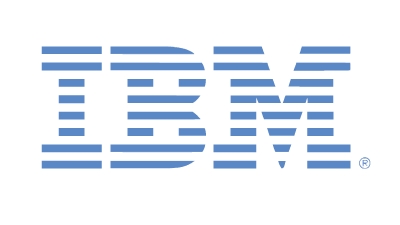As simplified operations becomes the priority, Cisco leads TV into the cloud
Submitted by Anonymous (not verified) on
Delivery InfrastructureThe Cisco Intercloud
John Moulding
Author
While for many years the priority for Cisco has been to enable new services and capabilities in response to customer requirements, the focus is now turning to simplifying operations. This was the key point made by Yvette Kanouff, the recently appointed Senior VP for Service Provider Video Software & Solutions at Cisco (who joined the company from Cablevision during the summer) at her first IBC for the company. She declared: “For the past few years it has all been about enablement: helping customers to leverage their infrastructure, but the focus, looking ahead and in terms of our customer priorities, is on simplification.”
The era of multiscreen viewing has made service delivery increasingly complex and Kanouff believes that the antidote is to start moving into the cloud. A good starting point is a virtualized data plane that can be shared by what would previously have been separate delivery workflows created by the need to target tablets, mobiles, set-top boxes and IP set-top boxes, among other things. Cisco is determined to lead the television industry into the cloud era and Kanouff sees it as something of a mission.
“Cisco is in a unique position. Because of our size and our worldwide presence I think we have an obligation to the industry to help deliver the federated cloud.”
She points to the Cisco Global Intercloud as evidence of how her company is trying to build new capabilities and a new market. Cisco announced Intercloud in March, committing $1 billion over two years to create what it claims is the world’s first truly open hybrid cloud. This is a network of clouds, harnessing data centres that become Intercloud nodes, making it easy for any company including television service providers to plug into what will be, for all intents and purposes, infinite compute and storage resources. It is designed to connect fragmented and custom-built clouds with open APIs.
As an example of how the Intercloud is being ‘built out’, Deutsche Telekom was recently named as one of 30 new partners and will deploy Intercloud nodes within its data centres in Germany. The nodes are operated by T-Systems, with T-Systems delivering sovereign and secure Infrastructure as a Service (IaaS) offerings that meet local data protection standards. This Intercloud infrastructure is based on OpenStack to allow DT to standardize and scale its services globally and it will incorporate Cisco’s suite of cloud solutions, like Cisco Intercloud Fabric and Cisco Application Centric Infrastructure (ACI). DT will have a holistic Intercloud architecture with centralized automation and policy-driven application profiles.
Cisco has just acquired California-based Metacloud to further its Intercloud ambitions. This company deploys and operates private clouds for global organizations with an OpenStack-as-a-Service model that delivers and remotely operates production-ready private clouds in a customer’s data centre. This means enterprises using the Cisco Intercloud can match the ‘as-a-Service’ operational benefits of public cloud with the security and control provided by private cloud.
“Metacloud will also allow service providers to combine their public cloud deployments with remotely managed OpenStack private clouds, and to deliver unique Intercloud offerings to their customers,” Cisco notes.
Cisco has also announced a partnership with Equinix to harness Intercloud technologies and the Equinix Cloud Exchange. Equinix Cloud Exchange is an interconnection solution that enables seamless, on-demand and direct access to multiple clouds, including Amazon Web Services and Microsoft Azure. The two companies plan to develop a hosted private cloud solution for the Intercloud, giving secure private access to cloud service providers in Equinix data centeres. The aim is to also deliver more secure, resilient and efficient interconnection to public clouds.
“Traditionally, security and performance concerns have deterred businesses from accessing cloud environments via the public Internet, and it has been challenging for organizations to bridge the gap between public and private clouds,” Cisco said in a press release about the partnership.
According to Nick Earle, Senior Vice President, Cloud and Managed Services at Cisco: “Equinix will bring its global data centre footprint and interconnection capabilities to the Cisco Intercloud partner ecosystem - a move that will help shorten the distance between public and private clouds for enterprise customers. By creating hosted private clouds and utilizing the interconnection capabilities of the Equinix Cloud Exchange, we will create a robust destination where our enterprise customers can experience the full benefits of the Intercloud.”
These are the developments that Kanouff is referring to when she says Cisco has the global outlook and reach to deliver on the promise of federated clouds. And it is the hybrid mix of private and public cloud that platform operators are now looking to exploit as they seek to move functions like video processing (e.g. encoding and transcoding), storage (e.g. network DVR recordings) and other applications (e.g. elements of the user interface, and ‘background’ UEX processing like content recommendation) to the cloud.
“I think large platform operators will want to host their own cloud but they will still want to federate in some way, so we have to be able to enable that,” Kanouff explains. “Some smaller operators will want managed clouds rather than to host their own cloud services.” She says a hosted cloud will simplify operations but managed cloud services take the process of simplification to the extreme, as they let operators hand over responsibility for running some of their operations entirely.
Cisco is putting its weight firmly behind OpenStack as the means to orchestrate cloud environments, meaning it is the chosen means to pull together different virtualized environments and then control them as a whole. It is actually the act of orchestrating different virtualized environments that turns these resources into a ‘cloud’. OpenStack is an open community software that different entities contribute into, and Kanouff says that as much as its capabilities, the key strength of OpenStack is its market acceptance.
It should be remembered that just because the cloud can be global in scale, this is a ‘facility’ that can be harnessed by small companies too. Kanouff notes that Cisco has a strategy for all sizes of operator and can scale its solutions downwards as well as upwards to match requirements. A key point about the Videoscape end-to-end platform is that it is modular. Nevertheless, managed services is another way that Cisco can help deliver economies of scale for smaller operators, enabling them to avoid building out systems themselves.
Mapping out the Cisco Service Provider priorities over the next year, Kanouff also highlights the importance of security, not just for content but in the wider context of protecting enterprises from all the IT threats they could face. Cisco also sees a role for itself in the Internet of Everything, making sure the multitude of interconnections, communications and clients, right down to the talking fridge, are secured against malicious hacking.






